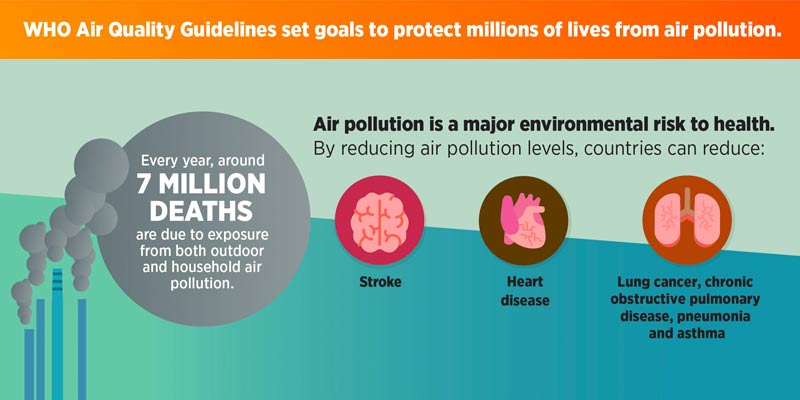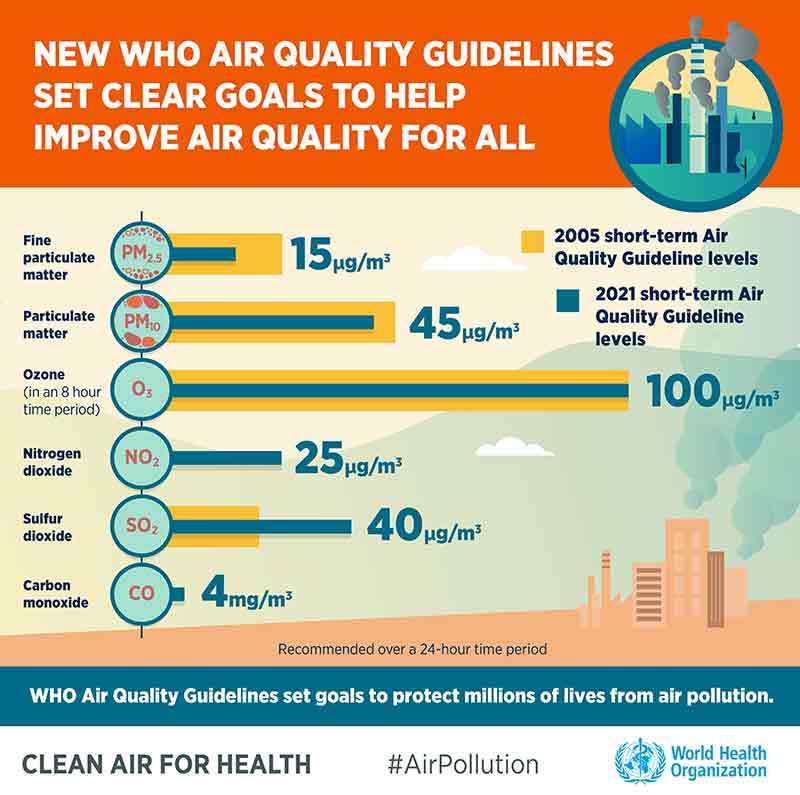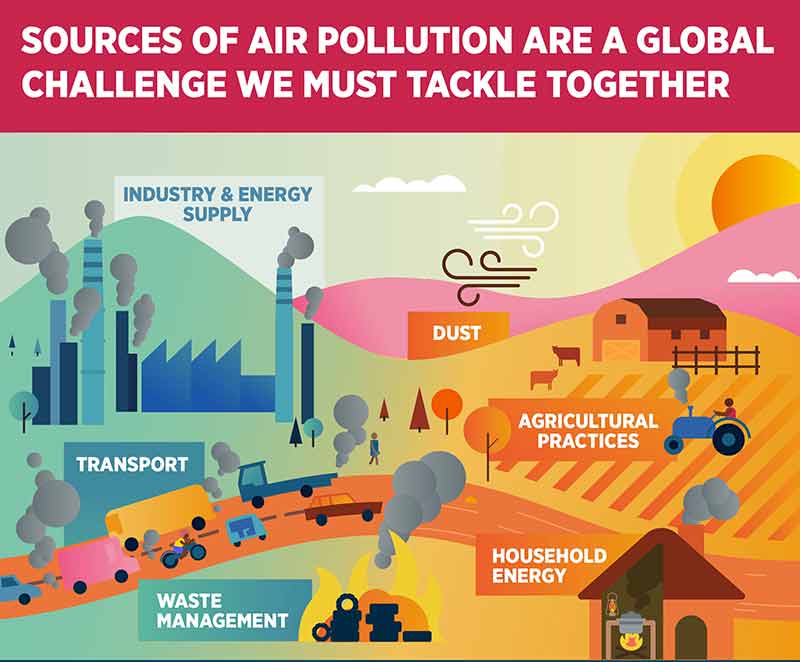- World
- Sep 24
WHO revises air quality guidelines
• The World Health Organisation (WHO) tightened its air quality guidelines for the first time since 2005, hoping to spur countries toward clean energy and prevent deaths and illness caused by air pollution.
• New WHO Global Air Quality Guidelines (AQGs) provide clear evidence of the damage air pollution inflicts on human health, at even lower concentrations than previously understood.
• The guidelines recommend new air quality levels to protect the health of populations, by reducing levels of key air pollutants, some of which also contribute to climate change.
Air pollution causes 7 million premature deaths a year
• Every year, exposure to air pollution is estimated to cause 7 million premature deaths and result in the loss of millions more healthy years of life.
• In children, this could include reduced lung growth and function, respiratory infections and aggravated asthma.
• In adults, ischaemic heart disease and stroke are the most common causes of premature death attributable to outdoor air pollution, and evidence is also emerging of other effects such as diabetes and neurodegenerative conditions.
• This puts the burden of disease attributable to air pollution on a par with other major global health risks such as unhealthy diet and tobacco smoking.
• WHO data shows that 9 out of 10 people breathe air that exceeds WHO guideline limits containing high levels of pollutants, with low- and middle-income countries suffering from the highest exposures.
• Air pollution is one of the biggest environmental threats to human health, alongside climate change. Improving air quality can enhance climate change mitigation efforts, while reducing emissions will in turn improve air quality.
• By striving to achieve these guideline levels, countries will be both protecting health as well as mitigating global climate change.
Key points of new recommendations:
• WHO’s new guidelines recommend air quality levels for six pollutants, where evidence has advanced the most on health effects from exposure.
They are:
• Two types of particulate matter known as PM 2.5 and PM 10
• Ozone (O₃)
• Nitrogen dioxide (NO₂)
• Sulfur dioxide (SO₂)
• Carbon monoxide (CO).
• The new recommendations slash in half the WHO limits for a measure called PM2.5, which stands for particulate matter smaller than 2.5 micrometers or less than one-thirtieth the width of a human hair. That is small enough to travel deep into the lungs and even enter the bloodstream.
• Particulate matter is primarily generated by fuel combustion in different sectors, including transport, energy, households, industry, and from agriculture.
• According to the new limits, average annual PM2.5 concentrations should be no higher than 5 micrograms per cubic meter.The old recommendations set the average annual limit at 10.
• Almost 80 per cent of deaths related to PM2.5 could be avoided in the world if the current air pollution levels were reduced to those proposed in the updated guideline.
• The WHO hopes the revisions encourage their member countries toward actions that slash fossil fuel emissions, which are also driving climate change. Globally, countries are under pressure to pledge bold emissions-cutting plans ahead of the UN climate conference in November in Glasgow, Scotland.
Combating air pollution in India
• A recent study has shown that India has a higher proportion of global health loss due to air pollution than its proportion of the global population.
• Air quality regulation and actions for abatement of air pollution is undertaken under various provisions of Air (Prevention and Control of Pollution) Act, 1981 and Environment (Protection) Act, 1986 which prescribes the mechanism and authorities for handling the issue.
• In order to address air pollution in the country, the environment ministry has undertaken several initiatives besides strengthening the ongoing national-level as well as city-specific activities on air pollution mitigation.
• National Clean Air Programme: The ministry launched the National Clean Air Program (NCAP) in January 2019 as a national-level strategy advising the actions for reducing the levels of air pollution at city and regional levels in India. Under NCAP, 132 non-attainment cities are identified on the basis
of non-conforming to National Ambient Air Quality Standards (NAAQS) for five consecutive years. The programme is designed to support the government’s target of 20-30 per cent reduction of particulate matter concentration by 2024.
• A Comprehensive Air Plan (CAP) for Delhi NCR has been developed identifying the timelines and implementing agencies for actions delineated.
• The central government has notified a Graded Response Action Plan (GRAP) for Delhi and NCR for different levels of pollution.
• A Commission for Air Quality Management in National Capital Region and Adjoining Areas has been constituted through promulgation of an ordinance to replace multiple committees and to streamline public participation, inter-state cooperation, expert involvement, research and innovation so as to mitigate the issue of air pollution.
Manorama Yearbook app is now available on Google Play Store and iOS App Store



